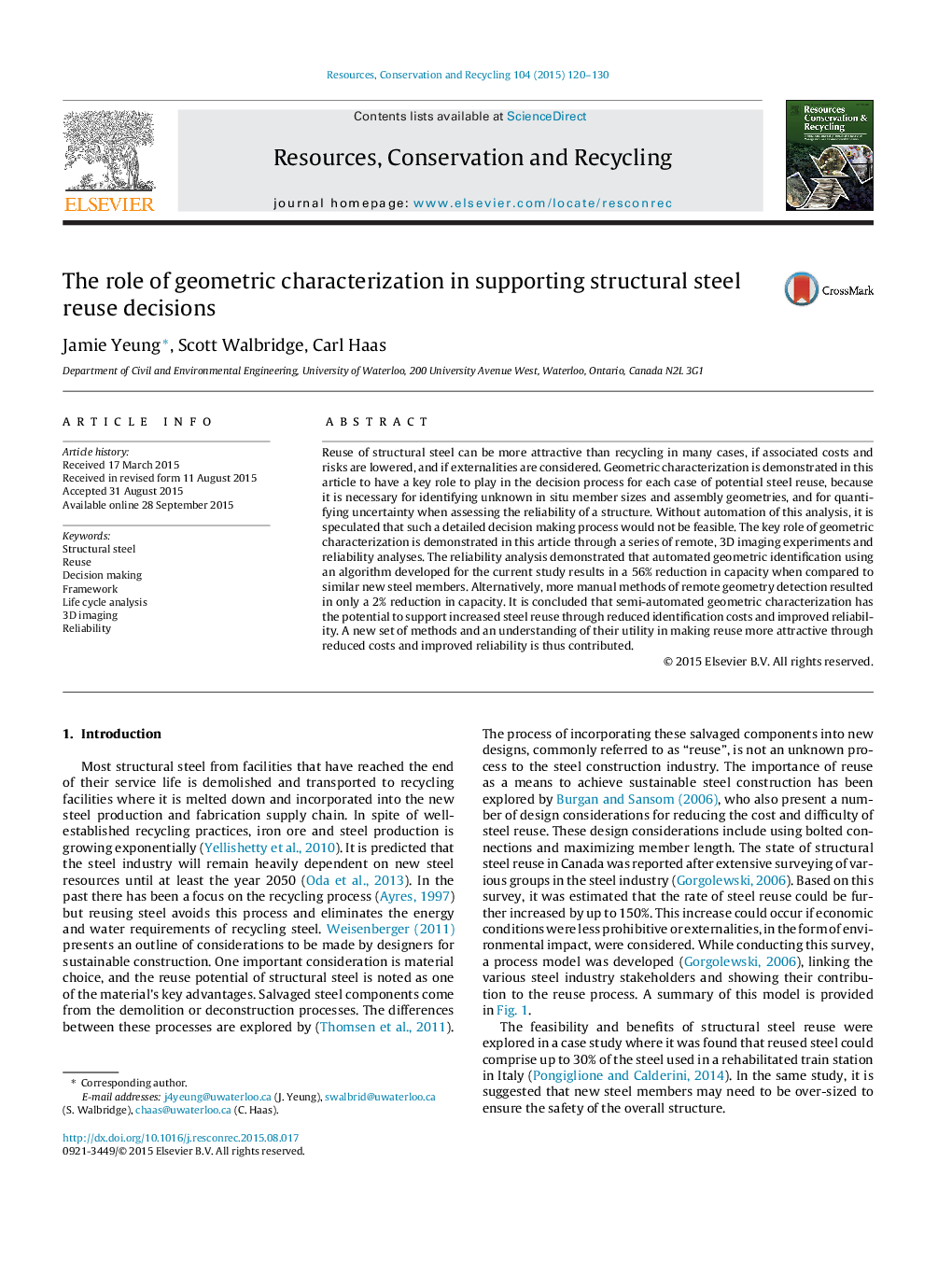| Article ID | Journal | Published Year | Pages | File Type |
|---|---|---|---|---|
| 1062815 | Resources, Conservation and Recycling | 2015 | 11 Pages |
•A decision making framework for structural steel reuse is presented.•This framework is accompanied by a list of required information.•The framework is supported by an automated geometric identification algorithm.•Automated identification results in a 56% reduction in the predicted capacity.•A less automated approach results in only a 2% reduction in capacity.
Reuse of structural steel can be more attractive than recycling in many cases, if associated costs and risks are lowered, and if externalities are considered. Geometric characterization is demonstrated in this article to have a key role to play in the decision process for each case of potential steel reuse, because it is necessary for identifying unknown in situ member sizes and assembly geometries, and for quantifying uncertainty when assessing the reliability of a structure. Without automation of this analysis, it is speculated that such a detailed decision making process would not be feasible. The key role of geometric characterization is demonstrated in this article through a series of remote, 3D imaging experiments and reliability analyses. The reliability analysis demonstrated that automated geometric identification using an algorithm developed for the current study results in a 56% reduction in capacity when compared to similar new steel members. Alternatively, more manual methods of remote geometry detection resulted in only a 2% reduction in capacity. It is concluded that semi-automated geometric characterization has the potential to support increased steel reuse through reduced identification costs and improved reliability. A new set of methods and an understanding of their utility in making reuse more attractive through reduced costs and improved reliability is thus contributed.
